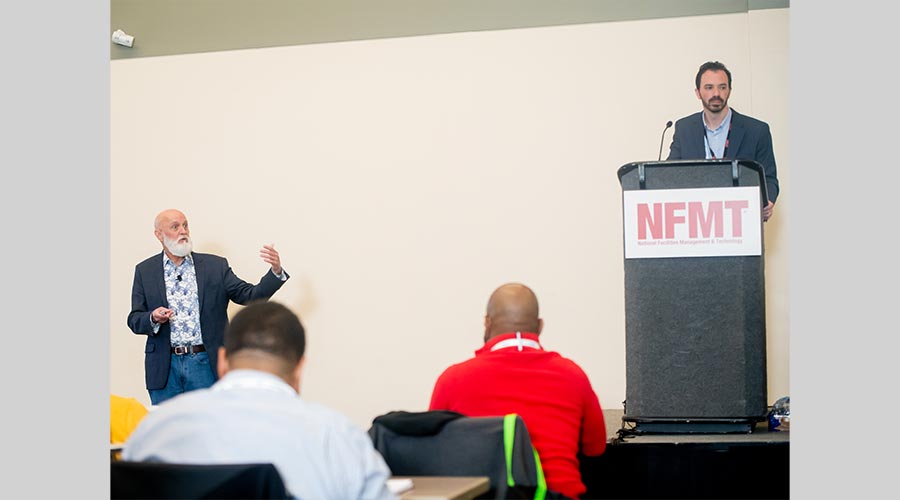This presentation from NFMT Baltimore shares a comprehensive analysis of construction cost trends based on data spanning from 2021 to quarter one of 2024.
Volatility characterizes the construction market, impacting costs across materials, labor, and equipment rental. While some areas experience more significant fluctuations than others, the overall market reflects a dynamic landscape.
Challenges such as skilled labor shortages and rising capital costs due to inflation are also impacting facility managers and their projects.
To help illustrate the importance of understanding cost trends, speakers John Timmerman and Sam Giffin of Gordian use a hypothetical scenario involving fire hydrant replacement. Waiting to replace infrastructure can result in significant cost increases, emphasizing the need for proactive decision-making based on cost projections.
Looking back at historical cost trends, the 2020 and 2021 market experienced extreme volatility driven by the pandemic and supply chain disruptions. While some regression in material prices has occurred, ongoing challenges, such as wildfires impacting lumber supply, still pose potential risks to stability.
The presentation covers specific material categories, including lumber, steel, and concrete. For instance, lumber prices saw historic spikes followed by a correction, but ongoing supply chain disruptions may reignite inflationary pressures. Similarly, steel prices exhibit fluctuations influenced by factors like demand shifts and supply shortages.
Concrete and masonry prices are also scrutinized, with demand influences and international shortages impacting pricing. Despite efforts to return to pre-pandemic levels, ongoing challenges in sourcing materials suggest continued volatility in the near term.
By leveraging data-driven insights like these, stakeholders can better navigate the complexities of the construction market and make informed decisions to mitigate risks and optimize resource allocation.
Log in or join fnPrime to start watching.





